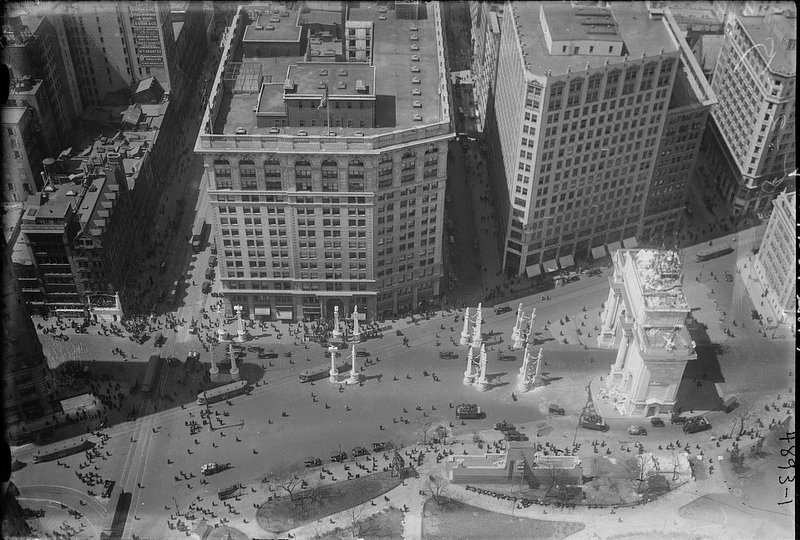 Image via Library of Congress
Image via Library of Congress
Contrary to what you may be thinking, the white arch depicted in the image above is in fact not a vintage photograph of the arch at Washington Square Park. Instead, this mysterious New York City arch is what used to be called the “Victory Arch”, a temporary monument of wood and plaster built at 24th Street and Fifth Avenue in 1918.
According to the New York Times’ insightful Streetscapes column, the arch was conceived by mayor John F. Hylan to commemorate the New Yorkers who died in World War I. Plans to make the Victory Arch a permanent monument were eventually thwarted due to a group of sculptors who felt it was too vengeful towards the Germans, and even Fiorello H. LaGuardia publicly denounced the project as an “Altar of Extravagance.”
 Photo from Library of Congress
Photo from Library of Congress
The arch was designed by Thomas Hastings and was modeled after the Arch of Constantine in Rome using temporary materials. Relief panels commemorating such things as important battles and war service organizations covered the $80,000 triple arch before it was eventually razed. According to the article, there were plans to rebuild the Victory Arch in a form but arguments over the arch’s symbolism as well as who would get the commission for the arch halted any plans for completion. Curiously, Madison Square had also been the location of another temporary arch in 1899 called the Dewey Arch, which was built to commemorate Commodore. George Dewey’s victory over the Spanish at Manila Bay in 1898. The Dewey Arch was built of staff, the same material used for the temporary buildings at the World’s Fairs.
Earlier in 1899, two additional arches were constructed to commemorate the centennial celebration of George Washington’s first inauguration, located on 23rd Street and 26th Street.
If you liked this story, you may also be interested in checking out 8 monumental arches in NYC and these vintage photographs of the original Madison Square Garden. Also, be sure to check out our guide to the Flatiron District.
Get in touch with the author @DouglasCapraro





